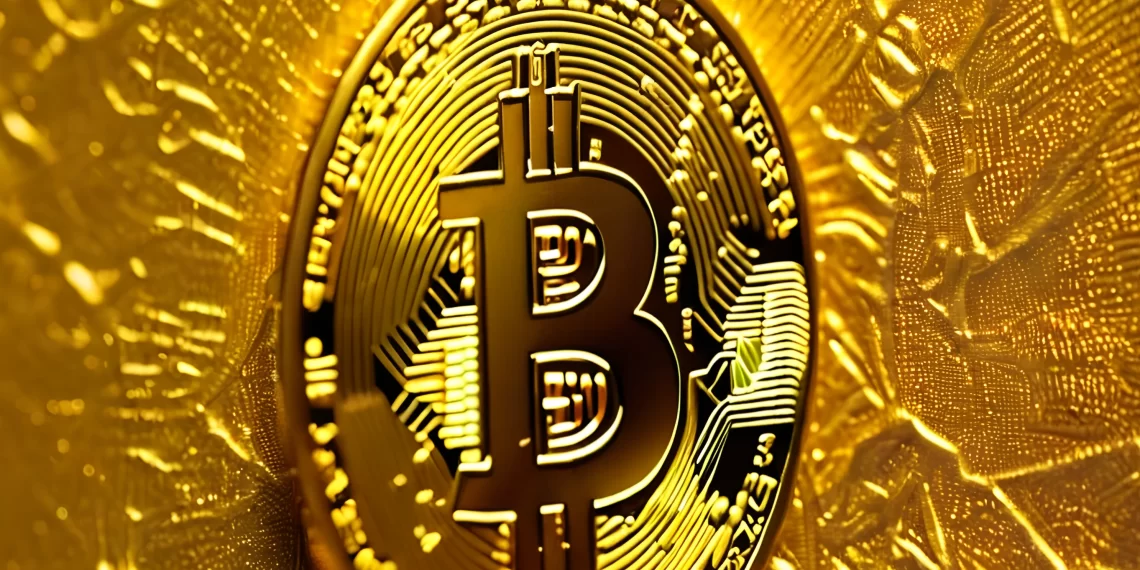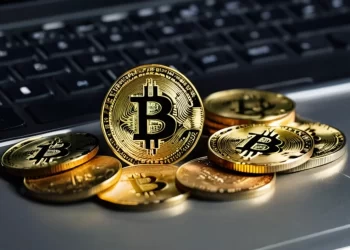Gold and bitcoin have hit all-time highs simultaneously, creating spikes confusing market watchers everywhere.
Market analysts have widely considered and analyzed the simultaneous rise in Bitcoin and precious metals, traditionally viewed as distinct investment instruments.
It’s like seeing two master musicians, each on a different instrument, play in perfect harmony to produce a mysterious and enthralling tune in the world of finance.
Record Highs For Bitcoin And Gold Spark Discussions About Investing Tactics
Even though these assets have historically represented different investing strategies, their concurrent rise has generated discussions regarding risk tolerance, short-term momentum trading, and the complex dance of global economic indicators.
A surge of capital pouring into recently established US exchange-traded funds (ETFs) solely focused on the asset class has driven the mysterious digital currency, Bitcoin, to increase in value by almost 50% this year.
This spike, which appears to be the result of traders using short-term momentum, casts doubt on the idea that Bitcoin’s value is only speculative. Like a fast-moving orchestra, the cryptocurrency market finds its beat in the quick movements of these investors seeking momentum in various asset classes.
Conversely, gold, the ageless haven and store of value, has risen to record highs, hitting $2,142 per ounce. However, the rising price of the precious metal suggests a different tune—possibly one of caution and protective posture.
The Crash of Bitcoin: ETFs and the 2024 Launch Push Crypto Above Conjecture
In line with its historical function as a hedge against inflation and depreciating currencies, gold is welcomed as a haven when geopolitical tensions persist and worries about a possible decline in global equities surface.
The story takes a surprising turn as the melody is further enhanced by anticipation of a looser monetary policy. According to Bloomberg News, swap markets indicate a 60% likelihood of a June interest rate decrease by the Federal Reserve, heightening concerns about the stability of traditional assets in the face of future economic difficulties.
With its complex dynamics, the market for gold is seeing a rise in demand from several industries, including technology, manufacturing, and jewellery.
Notably, central banks’ increasing gold holdings in recent years have added to the total price spike and enhanced the orchestral arrangement of this particular market action.
Meanwhile, the emergence of new US-based exchange-traded funds in 2024 contributes to Bitcoin’s increase in addition to ETF inflows. This improvement in the score highlights how the Bitcoin sector is constantly changing and carving out a place for itself beyond just conjecture.
Amidst the peaking market euphoria, Bitcoin experienced a brief surge to an all-time high of $69,200 before retreating to approximately $63,300. In contrast, gold hit a high of $2,142 per ounce, up roughly 5% over the previous five sessions.
Their lines diverge, indicating that even though the instruments are part of the same orchestra, they have different tones coming from them.
How Governments React To Gold And Bitcoin Price Increases
Governments worldwide are keeping a careful eye on the price of gold and Bitcoin spikes. To show support for blockchain technology and put the US in a position to profit from Bitcoin’s rise, the US Treasury Department is considering substituting some of its gold holdings with Bitcoin.
To adjust to the changing financial environment influenced by Bitcoin, policymakers are also looking into integrating private-sector stablecoins.
Regulations significantly impact cryptocurrency values, and government activities influence market trends. Traditional safe-haven assets like gold are affected by the rise in Bitcoin as central banks move away from the US dollar.
The interplay between Bitcoin and gold highlights governments need to modify their approaches to manage evolving market conditions successfully. Governments worldwide are acclimating to the intricate interplay between Bitcoin, gold, and changing legal structures.
























